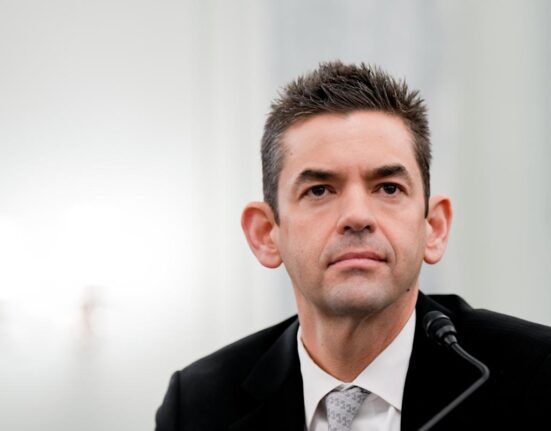By Danilo Masoni
MILAN (Reuters) -A return of fund inflows into renewable energy stocks is helping to breath new life into these companies’ shares, powering their strongest quarterly rise since the sustainability boom early this decade.
After two years of bearish sentiment and relentless redemptions that made the sector a short-sellers’ hotspot, a fundamental shift in the U.S. power demand outlook and greater policy certainty are luring investors back.
U.S. President Donald Trump‘s “One Big Beautiful Bill” and the subsequent move to direct the U.S. Treasury to restrict tax credit rules have hit the renewables industry. But money managers say the outcome was not as bad as many feared, and offers enough certainty for investors to engage and companies to resume projects.
“Valuations were so disconnected from the fundamentals that even confirmation of negative news became a positive catalyst, said BlackRock portfolio manager Alastair Bishop. “It allowed investors to start focusing on the fundamentals.”
With the outlook improving, Bishop said outflows from BlackRock’s active clean-energy strategies had slowed.
Robeco portfolio manager Roman Boner said flows into the company’s Smart Energy strategy had recently turned positive after sustained outflows.
Lipper data shows alternative energy funds had their first net monthly inflow in June, after 25 straight months of outflows totalling around $24 billion. Investors pulled out money again in July before inflows returned in August and neared $800 million in September, the largest since April 2022.
Quarterly data from Morningstar shows outflows from Clean Energy/Tech have shrunk to their lowest since the last recorded inflow in Q2 2023.
These green shoots coincide with double-digit gains in clean energy indices, ETFs, and a surge in individual stocks across the sector — from producers to infrastructure plays.
Bloom Energy is a prime example, teaming up with Oracle to deploy fuel cells at data centres. Its shares have rallied 300% in four months to become the biggest weight in the iShares Clean Energy ETF, a jump some investors view as over-exuberant.
The Federal Reserve’s dovish tone has also helped. Capital-intensive renewable projects benefit from lower borrowing costs, though rates remain well above the ultra-low levels seen during ESG’s heyday.
PRIVATE EQUITY MOVES IN LOOKING FOR VALUE
Private equity is also moving in, ignoring political noise to focus on long-term value. Global Infrastructure Partners is reportedly in talks to buy AES, potentially one of the largest deals involving a Wall Street power company.
By Danilo Masoni
MILAN (Reuters) -A return of fund inflows into renewable energy stocks is helping to breath new life into these companies’ shares, powering their strongest quarterly rise since the sustainability boom early this decade.
After two years of bearish sentiment and relentless redemptions that made the sector a short-sellers’ hotspot, a fundamental shift in the U.S. power demand outlook and greater policy certainty are luring investors back.
U.S. President Donald Trump‘s “One Big Beautiful Bill” and the subsequent move to direct the U.S. Treasury to restrict tax credit rules have hit the renewables industry. But money managers say the outcome was not as bad as many feared, and offers enough certainty for investors to engage and companies to resume projects.
“Valuations were so disconnected from the fundamentals that even confirmation of negative news became a positive catalyst, said BlackRock portfolio manager Alastair Bishop. “It allowed investors to start focusing on the fundamentals.”
With the outlook improving, Bishop said outflows from BlackRock’s active clean-energy strategies had slowed.
Robeco portfolio manager Roman Boner said flows into the company’s Smart Energy strategy had recently turned positive after sustained outflows.
Lipper data shows alternative energy funds had their first net monthly inflow in June, after 25 straight months of outflows totalling around $24 billion. Investors pulled out money again in July before inflows returned in August and neared $800 million in September, the largest since April 2022.
Quarterly data from Morningstar shows outflows from Clean Energy/Tech have shrunk to their lowest since the last recorded inflow in Q2 2023.
These green shoots coincide with double-digit gains in clean energy indices, ETFs, and a surge in individual stocks across the sector — from producers to infrastructure plays.
Bloom Energy is a prime example, teaming up with Oracle to deploy fuel cells at data centres. Its shares have rallied 300% in four months to become the biggest weight in the iShares Clean Energy ETF, a jump some investors view as over-exuberant.
The Federal Reserve’s dovish tone has also helped. Capital-intensive renewable projects benefit from lower borrowing costs, though rates remain well above the ultra-low levels seen during ESG’s heyday.
PRIVATE EQUITY MOVES IN LOOKING FOR VALUE
Private equity is also moving in, ignoring political noise to focus on long-term value. Global Infrastructure Partners is reportedly in talks to buy AES, potentially one of the largest deals involving a Wall Street power company.












Leave feedback about this